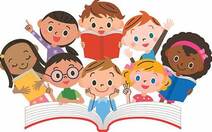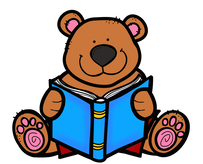
Westfield Nursery School
Westfield Road Dunstable Bedfordshire LU6 1DL Tel: 01582 608650 Email: [email protected] Head Teacher - Mrs Elizabeth Collins |
LITERACY

Literacy is composed of Reading and Writing.
Reading
Reading consists of two dimensions:
Writing
Writing involves:
Reading
Reading consists of two dimensions:
- language comprehension and
- word reading.
Writing
Writing involves:
- transcription (spelling and handwriting) and
- composition (articulating ideas and structuring them in speech, before writing).
| Literacy Policy | |
| File Size: | 101 kb |
| File Type: | |
PRE-READING SKILLS- HOW YOU CAN HELP

Ways to help:
Matching
-Card games
-Dominoes
-Matching shapes, pictures and letters
-Pairing up socks from the laundry
-Shape sorters
-Jigsaw puzzles
Rhyming
-Nursery rhymes
Miss of the end of rhymes for your child to complete, e.g. "Humpty Dumpty sat on a wall, Humpty Dumpty had a great...?"
When that gets too easy for them, make it harder! "Humpty Dumpty sat in a tree, Humpty Dumpty had a cup of ...?"
-Rhyming games e.g. "I Spy with my little eye, something that rhymes with 'fox' e.g. (box)
Letter Skills
-Introduce letters and their sounds gradually
-Start with letters that are important to the child, such as their initial
-Use letter sounds rather than names - 'a for ant', not 'ay for ape'
-Generally, stick to lower case letters to start with, except for the first letter of a name
-Use magnetic letters
Direction
When reading to a child, follow the print with your finger
Ask them where you should start - read the words in reverse order, to demonstrate that the story doesn't make sense if you don't start in the right place
Use tracing cards which reinforce left-right direction, such as exercises for the child to draw a line to take the bunny (on the left) to its hutch (on the right)
Motor Skills
Drawing and painting with lots of different tools and materials
Playing with small toys e.g. construction sets will help to develop fine motor skills
Use scissors
Concepts of Print
Read books!
Talk about the books you read- point out the title/ ask them what they think the book will be about, etc.
Use props
Tell stories with no book
Language Skills
Having conversations
Matching
-Card games
-Dominoes
-Matching shapes, pictures and letters
-Pairing up socks from the laundry
-Shape sorters
-Jigsaw puzzles
Rhyming
-Nursery rhymes
Miss of the end of rhymes for your child to complete, e.g. "Humpty Dumpty sat on a wall, Humpty Dumpty had a great...?"
When that gets too easy for them, make it harder! "Humpty Dumpty sat in a tree, Humpty Dumpty had a cup of ...?"
-Rhyming games e.g. "I Spy with my little eye, something that rhymes with 'fox' e.g. (box)
Letter Skills
-Introduce letters and their sounds gradually
-Start with letters that are important to the child, such as their initial
-Use letter sounds rather than names - 'a for ant', not 'ay for ape'
-Generally, stick to lower case letters to start with, except for the first letter of a name
-Use magnetic letters
Direction
When reading to a child, follow the print with your finger
Ask them where you should start - read the words in reverse order, to demonstrate that the story doesn't make sense if you don't start in the right place
Use tracing cards which reinforce left-right direction, such as exercises for the child to draw a line to take the bunny (on the left) to its hutch (on the right)
Motor Skills
Drawing and painting with lots of different tools and materials
Playing with small toys e.g. construction sets will help to develop fine motor skills
Use scissors
Concepts of Print
Read books!
Talk about the books you read- point out the title/ ask them what they think the book will be about, etc.
Use props
Tell stories with no book
Language Skills
Having conversations
SIGNPOSTING

The Government have produced advised about tips to support reading
See https://www.gov.uk/government/publications/10-top-tips-to-encourage-children-to-read/10-top-tips-to-encourage-children-to-read
See https://www.gov.uk/government/publications/10-top-tips-to-encourage-children-to-read/10-top-tips-to-encourage-children-to-read

